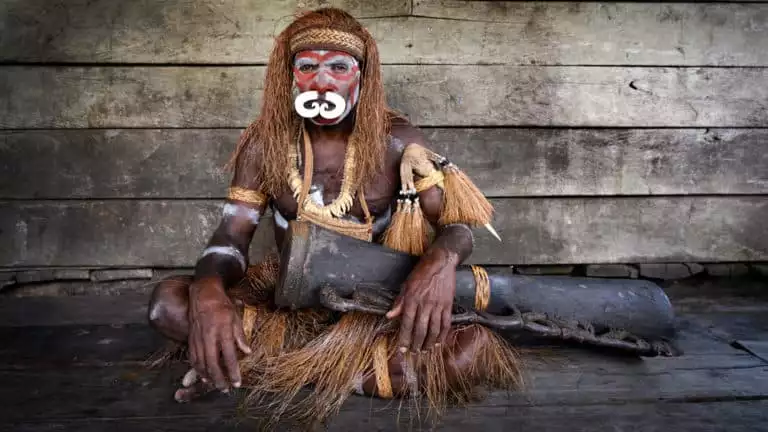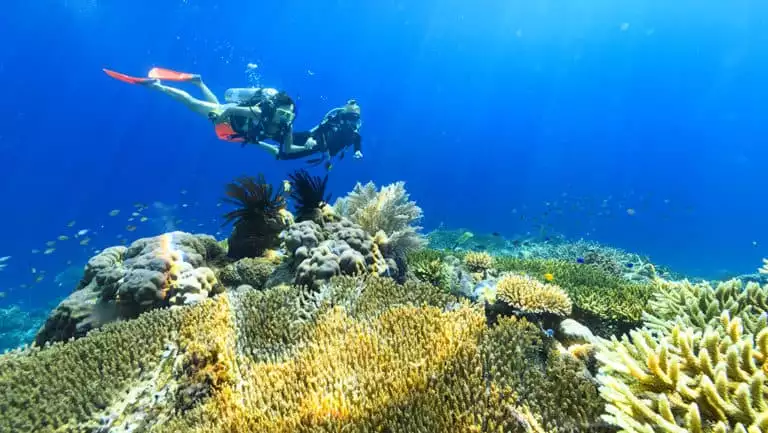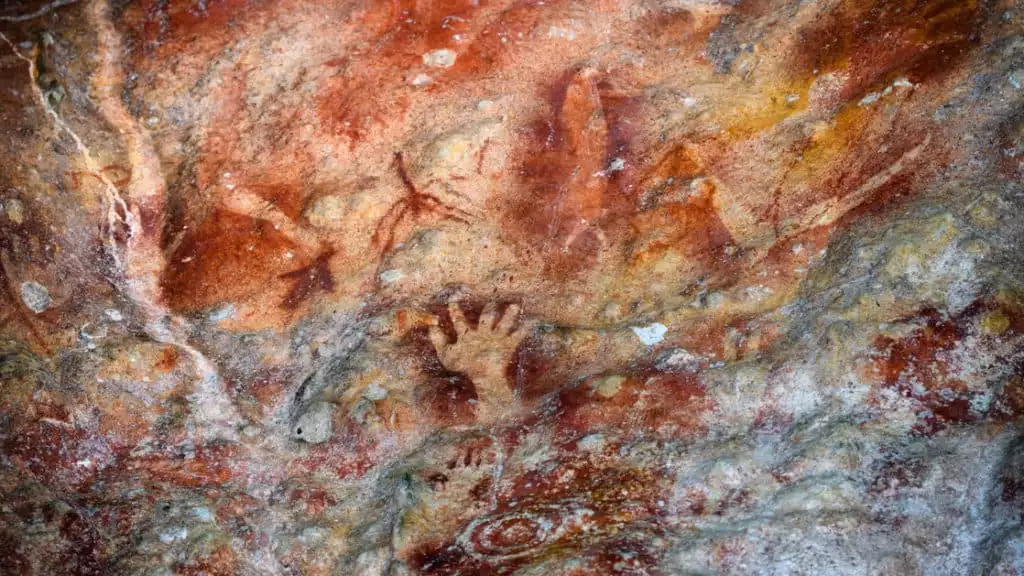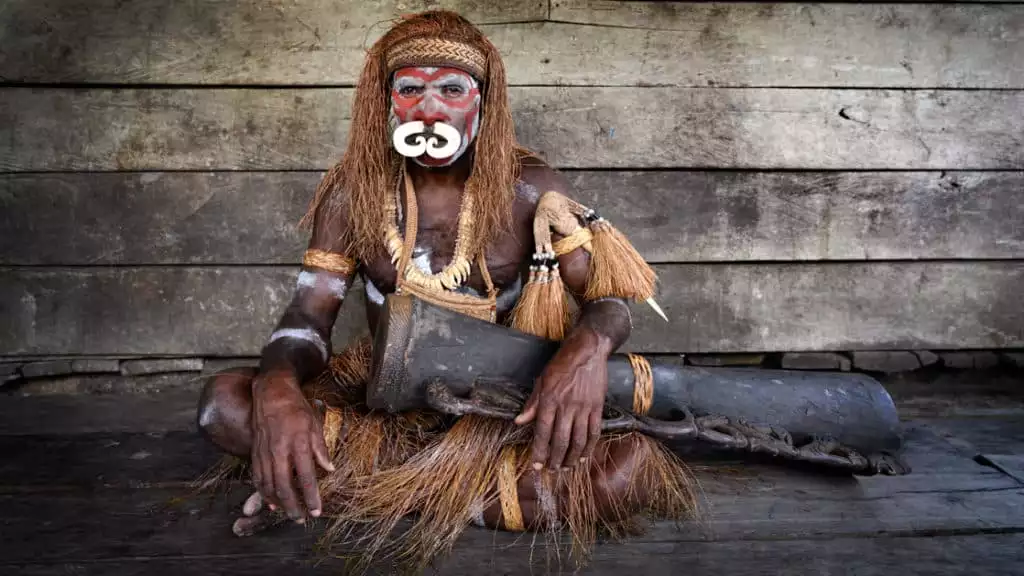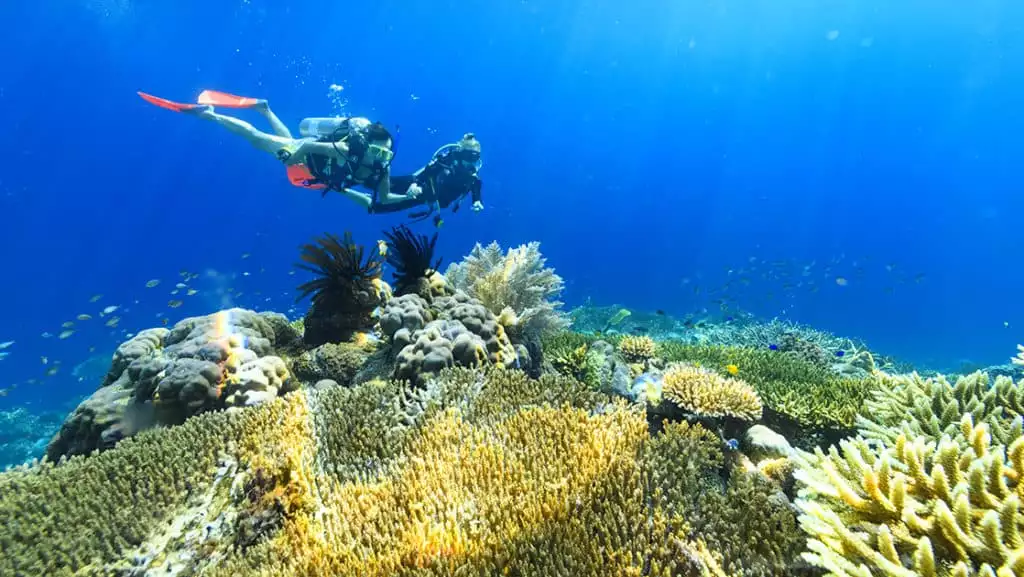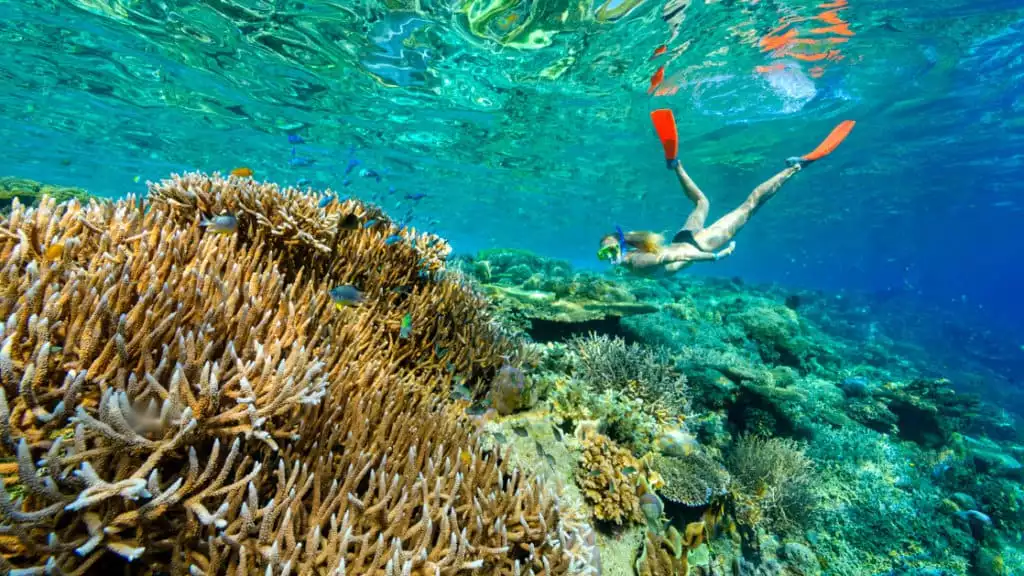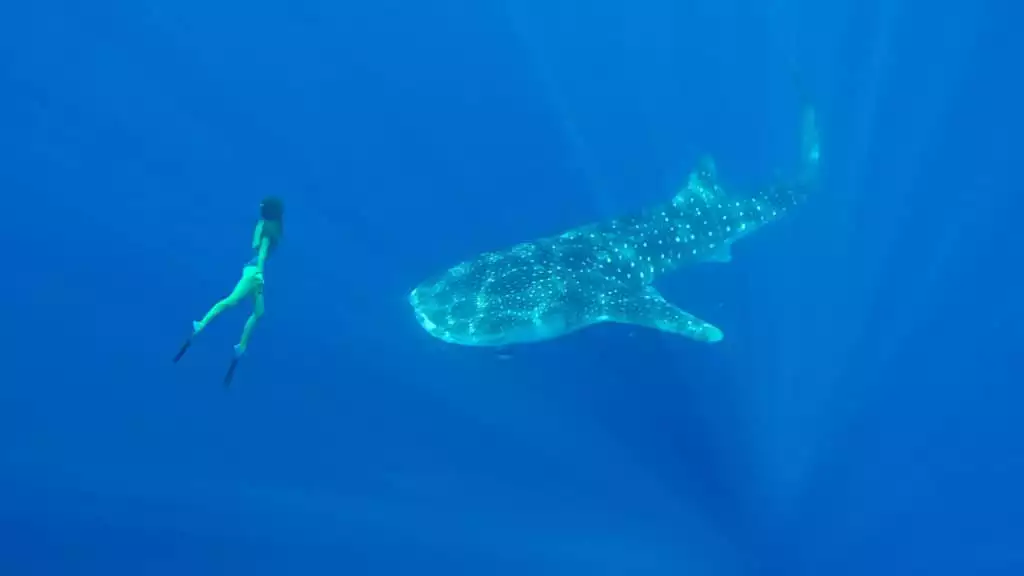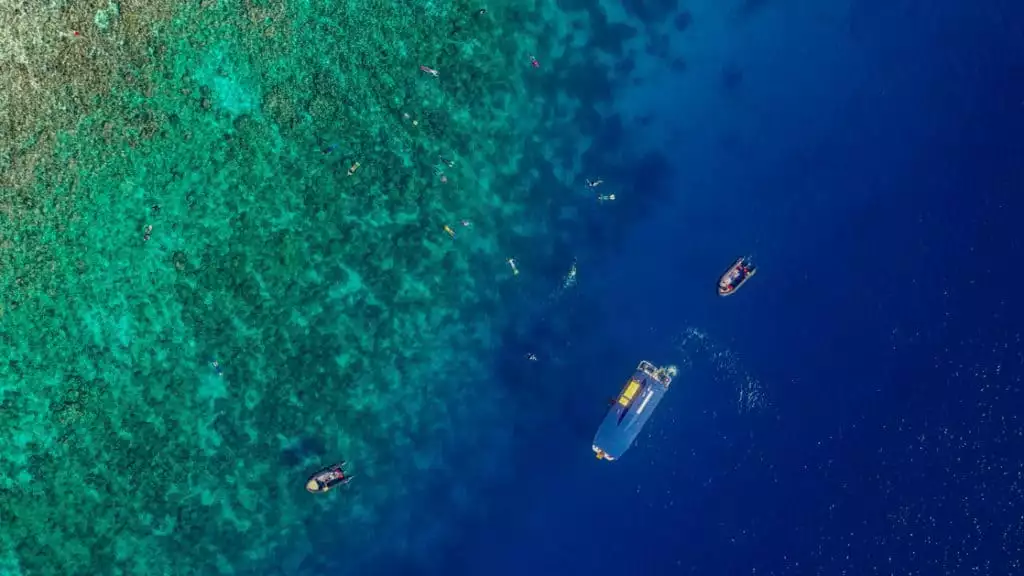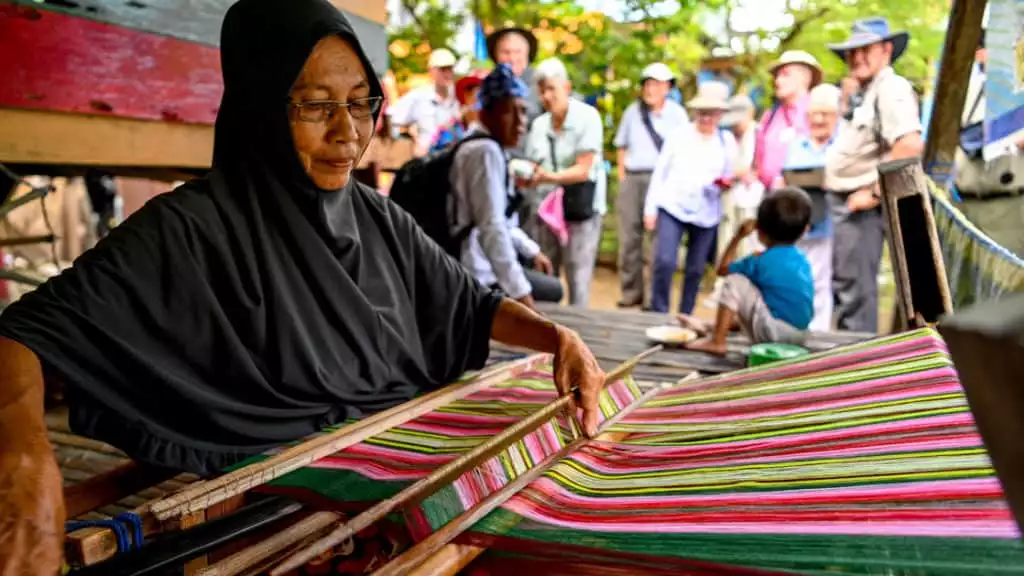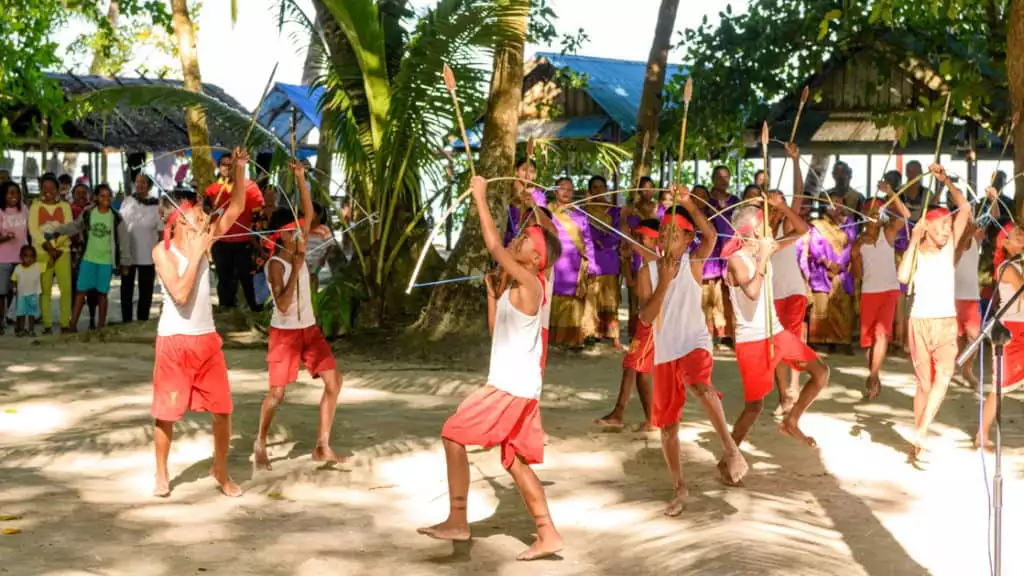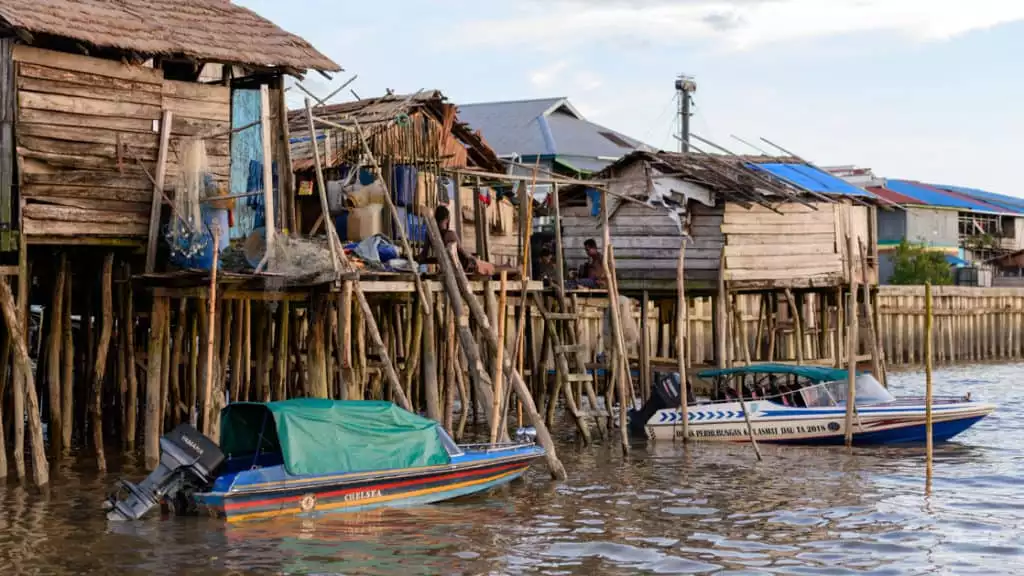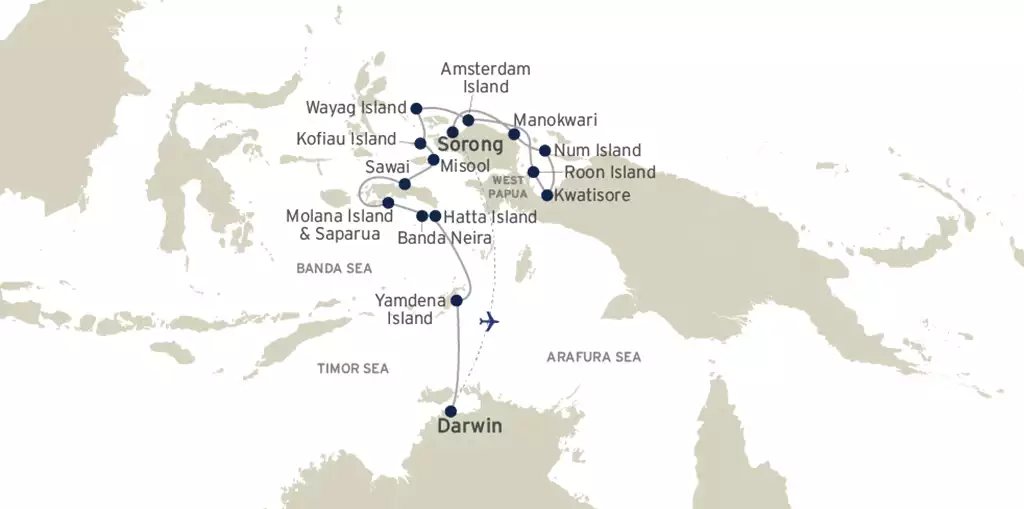Throughout this expedition, the expedition team may make changes to the itinerary in order to maximize the experience. Visiting these remote communities is subject to approval of the local landowners. Below are the key destinations the ship aims to visit.
Yamdena Island
Sangliat Dol is a peaceful traditional village in the Tanimbar Islands of Maluku, the center of the ancient boat culture of Maluku. Here boats were built to symbolize the arrival from sea of the original inhabitants of Maluku. Sangliat Dol village is one of few villages where the giant stone boat, and the culture associated with it, remains intact today.
This afternoon after lunch on board, take a coach ride from the port of Saumlaki towards Sangliat Dol, passing verdant fields and plantations. Be greeted by village elders and taken into the heart of the village where the megalithic structure is located. Here the village structure still follows the organization of the original inhabitants. The village head is seen as the Captain or Master “steering” the direction of the village. Many other positions of the village basically translate as “helmsman,” “harpooner,” “bailer boy” and other boat-related titles.
Banda Neira, Spice Islands
The Banda archipelago was once the world’s only source of nutmeg and has attracted merchants for at least 2,000 years as highly sought-after goods such as cloves, textiles, batik and rice were moved through Banda. The Banda Islands are lushly vegetated with tropical flora including the Myristica Tree (nutmeg) while the Banda Sea’s underwater lava flow reefs are popular for scuba diving and snorkeling.
On your approach to Banda Neira, witness the outline of Gunung Api volcano with its thin plume of smoke often rising from the summit. Admire the photo-worthy spectacle of Moluccan paddlers propelling kora kora canoes with their elaborately carved figureheads. Snorkel and dive over the nearby lava flow reef system or explore ashore and enjoy local tea and snacks on the waterfront.
Later in the afternoon, there is time to explore Fort Belgica, built by the first Governor-General of the Dutch East Indies (now Indonesia) in 1611. The pentagonal-shaped fort is extremely well preserved and provides an interesting insight into Dutch colonization. Join the locals for a traditional dance and music performance before enjoying a glass of sparkling wine as the sun sets over the fort.
On the second morning in Banda Neira, choose to explore the streets on a guided tour, spotting colorful local houses and meeting friendly children before visiting a local nutmeg plantation to gain a fascinating insight into the spice that started it all. Alternatively, snorkeling over the nearby lava flow system will reward with spectacular colorful coral and fish species. You may spot Dogtooth tuna, mobula rays, or some of the largest population of Napoleon Wrasse in Indonesia. After lunch, farewell Banda Neira.
Molana Island & Saparua Island, Spice Islands
Start the day arriving early at Molana Island whose history stretches back to the Portuguese colonial era. This uninhabited private island is home to 85 species of trees, pacific monitor lizards (Varanus Indicus), moluccan scrubfowl (Megapodius Reinwardtii) and coconut crabs. The island still contains the ruins of a hospital built by the Dutch, whose construction was interrupted by the Japanese occupation in World War II. Snorkelers can take advantage of the shallow corals and clear water with easy viewing of unique corals and plentiful fishes. Experienced divers may see an underwater cave that is connected to a well in the center of the island.
Head east to nearby Saparua Island where you are welcomed by singing school children. The area holds an important spot in history books which you’ll learn at Fort Duurstede, a 17th- century Dutch fort with a complicated backstory that spans centuries. Here, men and boys give their war dance with shields, swords and cultural adornment. This is a location of cultural immersion and learning.
Sawai Village, Seram Island, Spice Islands
In the middle of the Banda Sea, Sawai village is on Seram Island and is one of the oldest villages in the Maluku Islands. The village is in a beautiful setting with simple homes built on stilts over the ocean. Spend the day immersed in the crystal-clear waters and snorkeling over reefs. This is your final stop in the Spice Islands as you make your way to the natural playground of Raja Ampat.
Misool Island & Stone Gardens, Raja Ampat
Your introduction to the beautiful natural playground of Raja Ampat is at Misool, one of the four largest islands. Raja Ampat means the ‘Four Kings’ which refers to four main islands: Waigeo, Batanta, Salawati and Misool, in an archipelago comprising over 1,500 smaller islands. At Misool, visit Balbulol Lagoon, an almost landlocked inlet populated with conical-shaped islets undercut at sea level that rise from turquoise waters like Christmas trees. There is time to swim and kayak amongst the islands in this beautiful lagoon.
Visit another similarly spectacular waterway at Yapap, considered one of the best natural pools in the world. This vast primordial pool is dotted with dramatic limestone formations which look more like chess pieces than rocks. The turquoise Yapap sea has such clarity that grains of sand and coral reefs on the seabed are visible from the surface. Also visit heart-shaped Dafalen Love Lake which can be viewed from up high with a climb to the summit of nearby cliffs. Swimming and diving in these pristine waters is an undisputed highlight of your Raja Ampat adventures.
Kofiau Island, Raja Ampat
At Kofiau Island you are welcomed by village dancers from their traditional boats before leading you ashore at Deer Village (also known as Kampung Deer). Local guides show you through their village before you board a local longboat which takes you to another village, Kampung Awat. Here you enjoy a traditional Sasi Opening Ceremony and a barbeque on the beach. Sasi is a traditional ceremony to preserve the ecosystem and effectively limits the catch of particular marine species during a designated period. After lunch, snorkel and swim in the ocean and pay visit to more vibrant villages.
Wayag Island, Raja Ampat
More Raja Ampat treasures await today as you explore the magnificent waterways and lagoons by Xplorer and Zodiac boats with time to swim in crystal clear waters and walk upon white-sand beaches amongst the many islands. After lunch, there is an opportunity for an energetic hike up to famed Pindito Peak, with hikers rewarded by panoramic views over the island and its spectacular lagoon. Alternatively, you can choose to relax by swimming, snorkeling, kayaking or a guided glass-bottom boat tour.
Amsterdam Island
Today visit the little-known Amsterdam Island, part of the Su Islands (Mios Su) group, a cluster of small islands off the northern coast of Western New Guinea. Enjoy the opportunity to explore your very first West Papuan Village with local guides and a cultural welcome performance. There is also an opportunity to enjoy beachcombing and a swim.
Roon or Auri Island
Depending on the weather and conditions, today enjoy either Roon Island or Auri Island. One of the highlights of Roon Island is the wreckage of a Japanese Zero fighter plane lying in shallow water and is visible to snorkelers when the weather cooperates. The wreck has become a marine habitat and sports large corals, gorgonian fans as well as large populations of lionfish, surgeonfish and turtles, amongst other marine life. To reach Auri Island, navigate through picturesque island scenery before enjoying beach activities, swimming and snorkeling in this striking location.
Cenderawasih Bay & Kwatisore
Cenderawasih Bay (translates to Bird of Paradise Bay), hosts an incredible array of marine biodiversity. The largest marine park in Indonesia, Teluk Cenderawasih National Park protects a rich marine ecosystem, and covers an area of more than 5,600 square miles (14,500 square km) and is home to whale sharks, dugongs, dolphins as well as over 200 known species of fish and 150 species of coral.
Cenderawasih Bay is one of the few places worldwide where it’s possible to swim with this endangered species. There is no guarantee that whale sharks will materialise on cue–if they do, then you may have the chance to snorkel amongst them. Eyeballing these enormous fish, which are completely harmless and can grow to the length of a bus, is an experience you won’t forget!
Later, visit Kwatisore village with local guides and learn about West Papuan customs, cultures and the traditional lifestyles of the people. You will notice the difference in dancing, adornment and musical instruments of the West Papuan people in comparison to customs and culture of earlier islands visited in Raja Ampat and Spice Islands.
Num Island
An expeditionary stop for your ship, Palau Num is an island of the Yapen Islands group, in northeastern Indonesia. Here, have more time to visit traditional fishing villages on stilts and explore the waterways and lagoons, with time to swim, snorkel and a dive.
Manokwari
Manokwari, the capital of West Papua, is located right on the bird’s head on the island of Papua, surrounded by lush rolling hills and nearby to the Arfak Mountains. There are over24 different tribal groups here, each with its own unique language and culture. Choose from three expeditions:
Those with a keen interest in birding and wildlife may choose to travel into the Arfak Mountains to the Pegunungan Arfak Nature Reserve and enjoy the rare opportunity of exploring the higher elevations and misty tropical rainforests. Here, hope to see many endemic plants, animals and birds including cuscus possum, lesser birds of paradise, common paradise kingfisher, magnificent riflebird as well as king bird of paradise among the region’s 320 bird species.
Alternatively, choose to join a guided city tour of Manokwari and free time to explore this coastal town, the capital of the Indonesian provide of West Papua. Or visit Mansinam island–a religious island where guests can learn of the history and significance of the island and participate in snorkeling and diving WWII wrecks.



